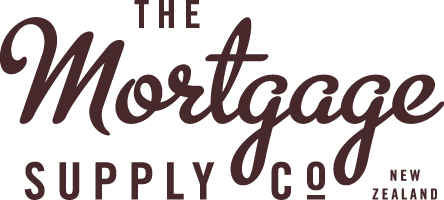Buying a first home can seem like a daunting task, filled with paperwork, terminology and processes that you may not yet be familiar with.
It’s most likely one of the biggest financial commitments you’ll make, and arming yourself with the right information will help to ensure you’re in a great position to make the right decisions along the way.
Let us walk you through it.
Step One: Financing your Home
The Deposit
The very first step in buying your first home is to save towards a deposit. There are a tonne of options out there, but most lenders require a deposit of around 20% of the house price in order to receive the best interest rates on offer.
If you can't get together a 20%, don't worry, you can still buy a home with a 10% deposit - however you may suffer a Low Equity Premium which is an additional rate on top of the rate provided by your bank, until you've reached 20% of capital in your home. You can achieve this via. repayments of debt or an increase in house value.
The deposit is usually the biggest challenge for first home buyers; getting together 20% of a six-figure plus sum can take a lot of virtuous effort.
Of course, the best way to get together a deposit is good old-fashioned saving. However, there are a few ways to get together a deposit that might speed up the process. We’d recommend looking into KiwiSaver withdrawal, family equity, and first home grants.
Home Loan Pre-Approval
Once you’ve got your deposit sorted, you’re ready to take the next step and apply for pre-approval of a home loan. This is the step where banks and lenders will asses your income, credit history, deposit amount and your financial circumstances, and make a decision on if/how much they’re will to lend you to buy your first home.
Usually, your pre-approval will be conditional and dependent on factors such as a registered valuation of the home you’re looking to purchase.
The less conditions, the stronger your pre-approval and the more confidently you can approach auctions with your offer.
Step Two: Finding your Home
Once you’re pre-approved, you can begin your search to find your perfect first home.
Begin by writing a list of the factors you might want to consider when searching for your first home. These might include:
- The location
- The type of property you’d like to buy
- Necessary bedrooms, bathrooms and amenities
- What you can afford
Once you have these factors listed and prioritised, you can refine your options accordingly.
Before jumping into any auction, we’d suggest doing your background research first. This includes looking into recently sold properties, market reports and suburb reports, as well as checking out listings across a number of online property auctions.
This will give you a good feel for what’s available and what the properties you’re interested in are really worth.
Once you’ve found a house within your budget that meets your needs, take this to your consultant to see if the property meets your conditions of pre-approval.
When your lender gives you the green light, you’re good to make an offer!
Step Three: Making an Offer
Now that you’ve found your perfect first home, it’s time to make an offer. This can be a nerve-wracking time for a lot of buyers, as you’re looking to make an offer that isn’t too little or too much, and it’s important to include any conditions you may need to be met before signing a Sale and Purchase agreement.
Fortunately, your mortgage broker can talk you through this process and offer guidance on your offer and sale and purchase agreement before you sign.
Conditions
In your offer, you’re able to state any conditions you require to be met before you sign your Sale and Purchase agreement. This protects both yourself and your lender from making a bad investment in a problematic property and give you the option to back out if you feel that the property isn’t quite right after further investigation.
Some of the conditions you may want to consider adding are:
- Finance
- Builders report
- LIM report (Land Information Memorandum)
- Certificate of title and property bag search
In your original pre-approved home loan document, there are likely to be pre-approval criteria that you’ll need to meet fore your loan is signed off, so it’s important to include these too.
Making the right offer
The second piece to creating an offer, is to decide on a figure you’re happy to pay for the home. This is always a tricky number to land on, as you don’t want to offer too low and risk offending the seller, or offer too high and pay more than necessary.
If you’re liaising with a real estate agent, they’ll likely refuse to present the offer if they feel it’s too low.
Otherwise, the key here is to do your research. Have a strong knowledge of the value of properties in the area, investigate online valuations and property reports, and of course, consider how much you can afford and have been pre-approved for.
Step Four: Going unconditional
If your offer is accepted by the seller, you’re ready to get all of your ducks in a row and go unconditional.
To do this, all of the conditions stated in your Sale and Purchase agreement must be met by the due date, and if you’ve satisfied the conditions of your pre-approval, you should receive an ‘unconditional letter of offer’ which you can take to your solicitor to confirm that the finance condition in your agreement has been met.
Going unconditional means that:
- Once the agreement goes unconditional, neither the buyer nor the seller can back out
- Deposits are made to the real estate agency from the buyer
- The buyer must pay the rest of the purchase price on the settlement day
Step Five: Settlement Day & Onwards
Settlement day is the final date that you pay the remaining figure to purchase the property. This usually coincides with the date you get the keys, but isn’t always the case.
Once the seller’s solicitor has confirmed in writing that settlement has been made and the change of ownership is then registered with the Land Transfer office, you’re officially the owner of your first home!
Of course, this isn’t the last step in the process. If you have a mortgage, you’re in for a long road of repayments, and it isn’t always as straight forward as a direct debit every month. It’s important to consider refinancing and improving your home loan structure in order to pay off your home loan as fast as possible with minimal interest incurred.
If you’re interested in finding out more about the first home buyer’s process, don’t hesitate to get in touch. We’re more than happy to take you through the steps.











